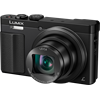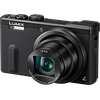Main
Model
Price
Advantages
launch
Announced
Body type
Camera subcategory
Sensor
Effective pixels
Max resolution
Sensor size
Sensor type
Processor
Image ratio w:h
Sensor photo detectors
Image
ISO
White balance presets
Custom white balance
Image stabilization
Image stabilization notes
Uncompressed format
JPEG quality levels
Boosted ISO (maximum)
Photography features
Minimum shutter speed
Maximum shutter speed
Aperture priority
Shutter priority
Manual exposure mode
Subject / scene modes
Built-in flash
Flash range
External flash
Flash modes
Continuous drive
Self-timer
Metering modes
Exposure compensation
AE Bracketing
WB Bracketing
Screen / viewfinder
Articulated LCD
Screen size
Screen dots
Touch screen
Screen type
Live view
Viewfinder type
Viewfinder coverage
Viewfinder magnification
Viewfinder resolution
Videography features
Resolutions
File Format
Microphone
Speaker
Optics & Focus
Focal length (equiv.)
Optical zoom
Maximum aperture
Autofocus
Digital zoom
Manual focus
Normal focus range
Macro focus range
Number of focus points
Physical
Weight (inc. batteries)
Dimensions
Environmentally sealed
Battery
Battery details
Battery Life (CIPA)
Storage
Storage types
Storage included
Connectivity
USB
HDMI
Microphone port
Headphone port
Wireless
Wireless notes
Remote control
Other features
Orientation sensor
GPS
GPS notes
Samples
Videos
Summary
The Panasonic Lumix DMC-ZS40 (Lumix DMC-TZ60) highest resolution of 4896 x 3672 pixels (18 megapixels) is better than the Lumix DMC-ZS50 (Lumix DMC-TZ70) highest resolution of 4000 x 3000 pixels (12 megapixels). The Panasonic Lumix DMC-ZS40 (Lumix DMC-TZ60) offers a wider ISO range of 100-3200 than 80-6400 ISO range of the Lumix DMC-ZS50 (Lumix DMC-TZ70). Such ISO range allow the photographer to take good quality pictures in dim light conditions.
The Lumix DMC-ZS50 (Lumix DMC-TZ70) screen is better as it has more number of screen dots 1,040,000 in comparison to 920,000 dots of the Panasonic Lumix DMC-ZS40 (Lumix DMC-TZ60) screen. The higher dot count screen is better for reviewing pictures on your camera.
The Lumix DMC-ZS40 (Lumix DMC-TZ60) weighs 240g which is 3g less than the weight of the Lumix DMC-ZS50 (Lumix DMC-TZ70). Recording GPS data can be useful if you like to travel, to be able to go into the image metadata and see exactly where an image was shot.
The Lumix DMC-ZS40 (Lumix DMC-TZ60) has 6 advantages and the Lumix DMC-ZS50 (Lumix DMC-TZ70) only 3 so the Lumix DMC-ZS40 (Lumix DMC-TZ60) becomes the best buy. Check the lowest price on Amazon.


